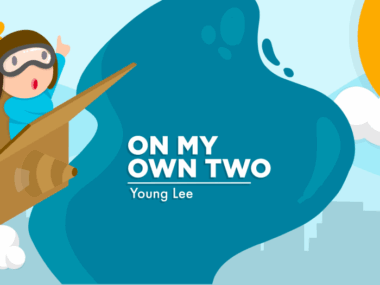Is My CMT ‘Invisible’?
Written by |

I saw something about invisible disabilities the other day. To me, that means a chronic illness that has flare-ups or any type of disorder that you cannot really see. I have heard people say that Charcot-Marie-Tooth is an invisible disability. I have Charcot-Marie-Tooth type 1A, and I am not so sure I agree with that statement.
Is it noticeable if I am sitting or standing? Probably not at first glance. You may see me stumble or lose my balance when standing for a long period, but that can be chalked up to many different things. Maybe I was just tired or lost my focus on what I was doing. You may not even notice that I stumbled or had a harder time getting up from the chair.
However, once I walk, you will notice that something is not quite right. You will most likely see the awkward gait and unbalanced walk. You may even notice that I often look down when walking to make sure I know where I am putting my foot, as I have little to no position sense in my feet. My ankle-foot orthoses (AFOs) are not noticeable when I wear long pants or skirts, so others may not realize I have them. I do not think that makes my disability invisible, it just may look different from what people expect to see.
That made me think about how people view others with disabilities. Does a disability need to be the first thing people see for patients to be considered disabled? I don’t think so. I wear my AFOs daily and sometimes use a cane. I often do not use the cane, such as in a grocery store or walking around my school. Does that mean I am fine? No, it doesn’t. Just because the disability is not overt it does not mean it is not there. The fact that it is not glaringly obvious does not make it invisible, either.
I think some people have this idea of what a disabled person looks like. When someone does not fit that image, observers are not sure how to react. It is as if they have created an image that all disabled people need a wheelchair, walker, or other assistive devices that can be seen at all times. I hope others can learn that disabilities come in many forms, and some are more visible than others.
I am working on not allowing my CMT to define me, yet I know that it is not invisible. I realize that people notice some of the issues I have. I just do not want to be judged or defined by it. I am learning to take risks, ask for help, and put myself out there. I just want to be seen for who I am, not someone with a disability.
***
Note: Charcot-Marie-Tooth News is strictly a news and information website about the disease. It does not provide medical advice, diagnosis, or treatment. This content is not intended to be a substitute for professional medical advice, diagnosis, or treatment. Always seek the advice of your physician or other qualified health provider with any questions you may have regarding a medical condition. Never disregard professional medical advice or delay in seeking it because of something you have read on this website. The opinions expressed in this column are not those of Charcot-Marie-Tooth News or its parent company, Bionews Services, and are intended to spark discussion about issues pertaining to Charcot-Marie-Tooth.






Lainie Ishbia
Thanks for your perspective and nice article. As you you may know, I have a website (Trend-Able) that's all about empowering people to live well with "invisible disabilities" like CMT. CMT is different for everyone . I wear braces as well and have major hand problems, but you would not know this if you met me. Since I have the option (many do not), I choose not to show and talk about my disabilities. My physical challenges are "invisible" because they are not obvious to others. This alone presents unique challenges, like having to tell people that I can't do certain things and when dating again after a divorce. I give those that have "invisible disabilities" tips, fashion, and workarounds, So they can avoid being defined by CMT or anything else.
Jill Price
Lainie,
I follow you!! I love your blogs and posts. I appreciate that CMT is different for everyone and everyone has their way of dealing with their disability. I am learning it is okay to let others know and not to be ashamed of it.
Frogg
Invisible disability is subjective and it's contextual. It's subjective in that it depends on the observation capacity of others, such as when your AFO's are hidden by long pants. It's contextual in relation to what the actual conversation is about. There are people for instance that are in wheel chairs that are employed, while their are those with CMT not in a wheel chair that draw disability payments. A hasty conclusion would be that if the person in the wheel chair can work that the person with CMT could also work. However aren't that simple. What are the actual abilities of the two people? For instance a lawyer doesn't need their legs to practice law. So, let's say the person in the wheel chair is a lawyer and the person with CMT is a factory worker with no formal education beyond highschool. While someone can easily make such a hasty conclusion the law is distinct. The law checks the ability of the person and weighs it against the deficit of the disability. What work did they do and can they do it now simply? And you can see that while contextual when faced with such a hasty conclusion subjectivity jumps back in.
Jill Price
You make some valid points. Thank you for your feedback.